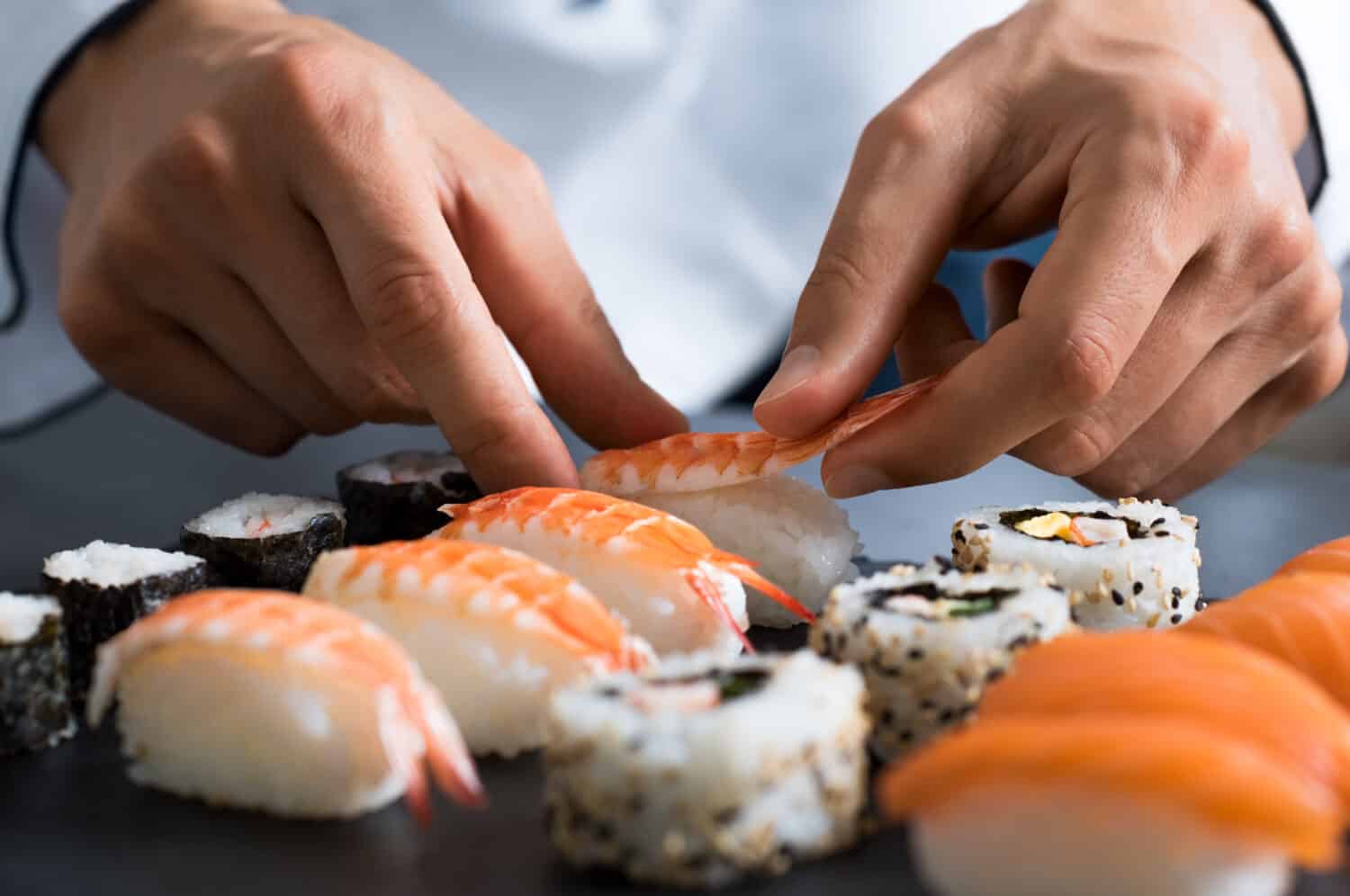If you've ever browsed a sushi menu, then you know that the options can be nearly endless. One of the main subitems you'll see listed under sushi is maki. This can be confusing. Does it mean maki and sushi are the same thing? If not, how are they different?
In short, maki is a type of sushi that's rolled into cylinders and then sliced into individual bite-sized pieces. Sushi, on the other hand, is a broad term that represents any sort of Japanese meal made with rice cooked in vinegar and other ingredients like vegetables, fish, and tofu. Sushi can come in many shapes, sizes, and variations while maki is always hand-rolled and cylindrical.
Let's take a closer look at the 3 main differences between these two popular Japanese food items as well as how maki stacks up against other kinds of sushi.
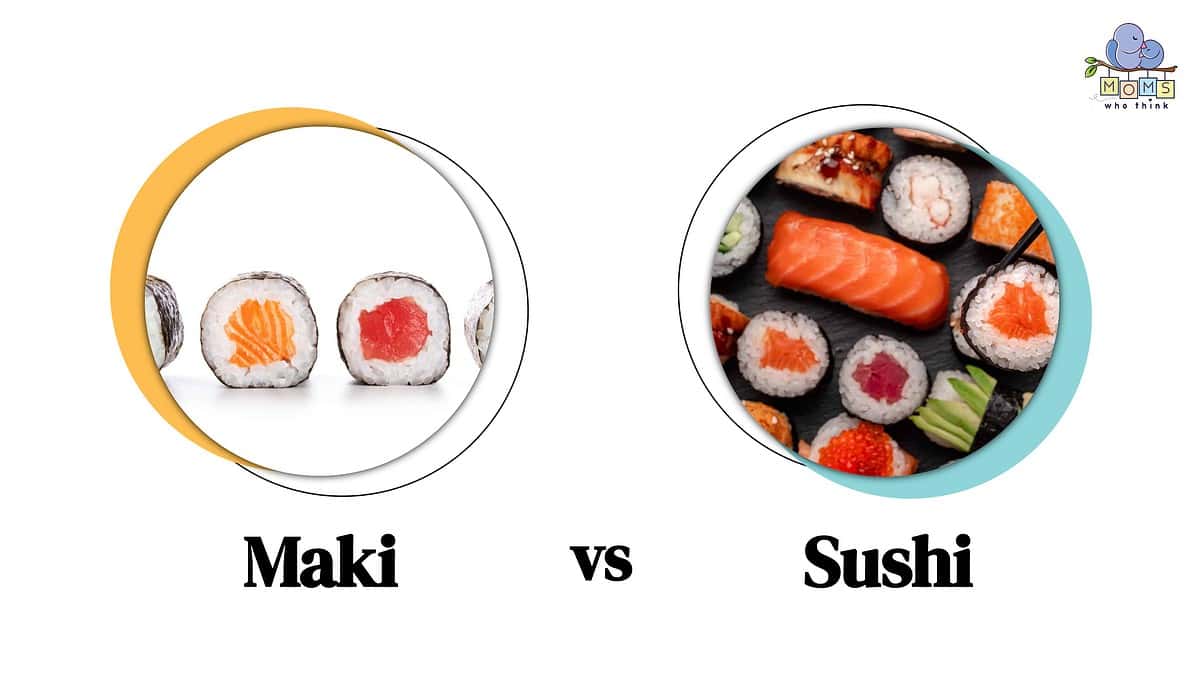
What is Maki?
As mentioned, maki is a type of sushi. Its main distinction is that it's always formed into a cylindrical shape. Specifically, maki is always rolled with a sheet of seaweed, also called “nori.” Sometimes maki is called makizushi or norimaki, as well.
Maki is one of the most basic forms of sushi and is usually a great starting point for those who are being introduced to Japanese cuisine. While the rolls begin with nori seaweed sheets, the stuffing can consist of many different combinations of rice, vegetables, and meat like tuna, salmon, or crab.
Different Types of Maki
There are a few different types of maki on the market today. One popular option is uramaki. This is considered an inside-out roll because the rice is wrapped around the nori sheet and the vegetables and meat are only placed within the seaweed.
Another popular maki roll is futomaki. This is the largest sushi roll and usually has a diameter of 2 to 2.5 inches. Temaki is another option and is uniquely shaped like an ice cream cone with a large nori sheet as the outermost layer.
How to Make Maki at Home
To make these sushi rolls at home, you'll need a bamboo mat and a few nori seaweed sheets. You'll lay your seaweed on top of the mat, shiny side down, then cover it in vinegar-infused sushi rice. After your rice is evenly distributed, you can include any form of raw or cooked fish or meat and vegetables. Then you'll roll everything up and slice it into bite-sized pieces.
For a quick example, the popular California roll includes crab, avocado, and cucumber fillings inside the rice and seaweed wrap.
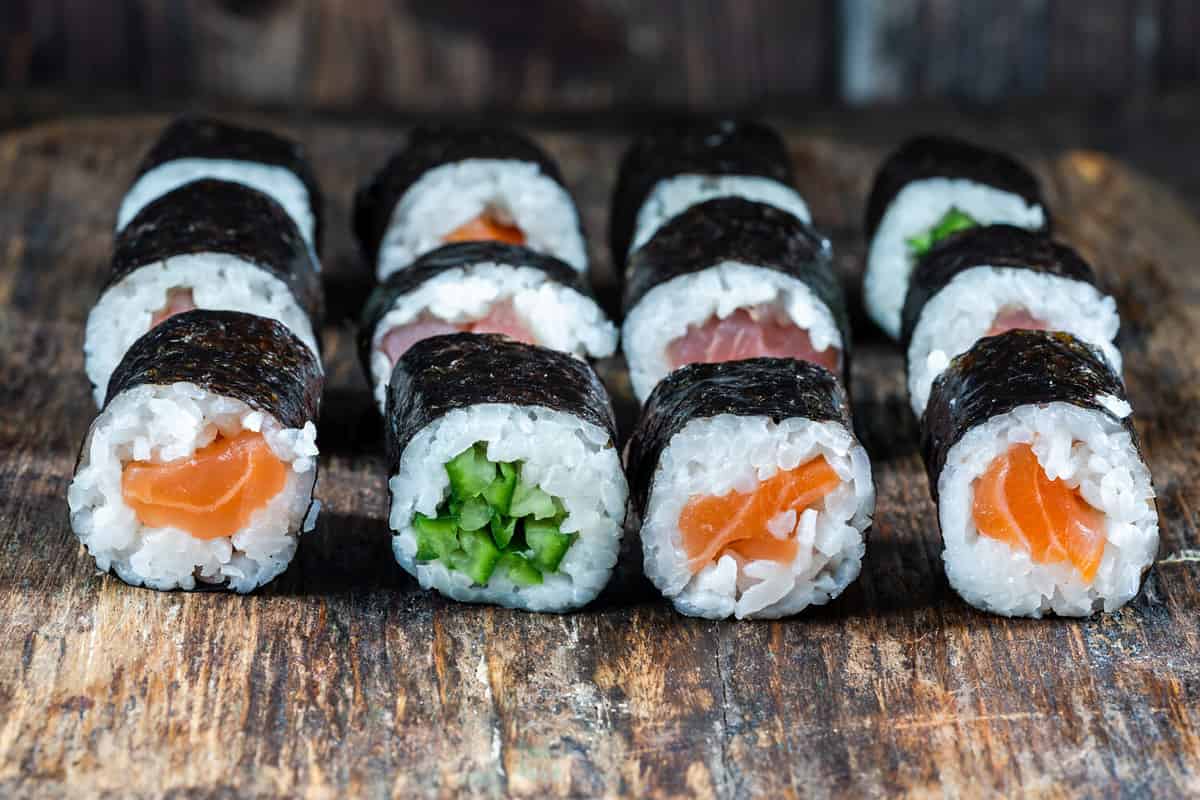
©BBA Photography/Shutterstock.com
What is Sushi?
As we've discussed, sushi is a broad term that includes many different forms of Japanese cuisine. Oftentimes, sushi is confused for being a fish or seafood dish, when in reality, sushi is all about vinegar-flavored rice.
Sushi always has vinegared rice but can contain any combination of cooked or raw meat, fish, and vegetables. Sushi can also be served in unique ways and doesn't always come as a roll. Additionally, you'll likely find all sushi served with a dab of Wasabi, pickled ginger, and soy sauce.
Different Types of Sushi
We know that maki is a form of sushi, but what other types are there? Inari or inarizushi is a form of sushi that's served in fried tofu bowls. Nigiri or nigirizushi is a popular variety of sushi that's made with a thin layer of rice and topped with raw fish. Chirashi sushi is another type and is served in a bowl.
We'll dive into how maki stacks up to these various forms a bit later.
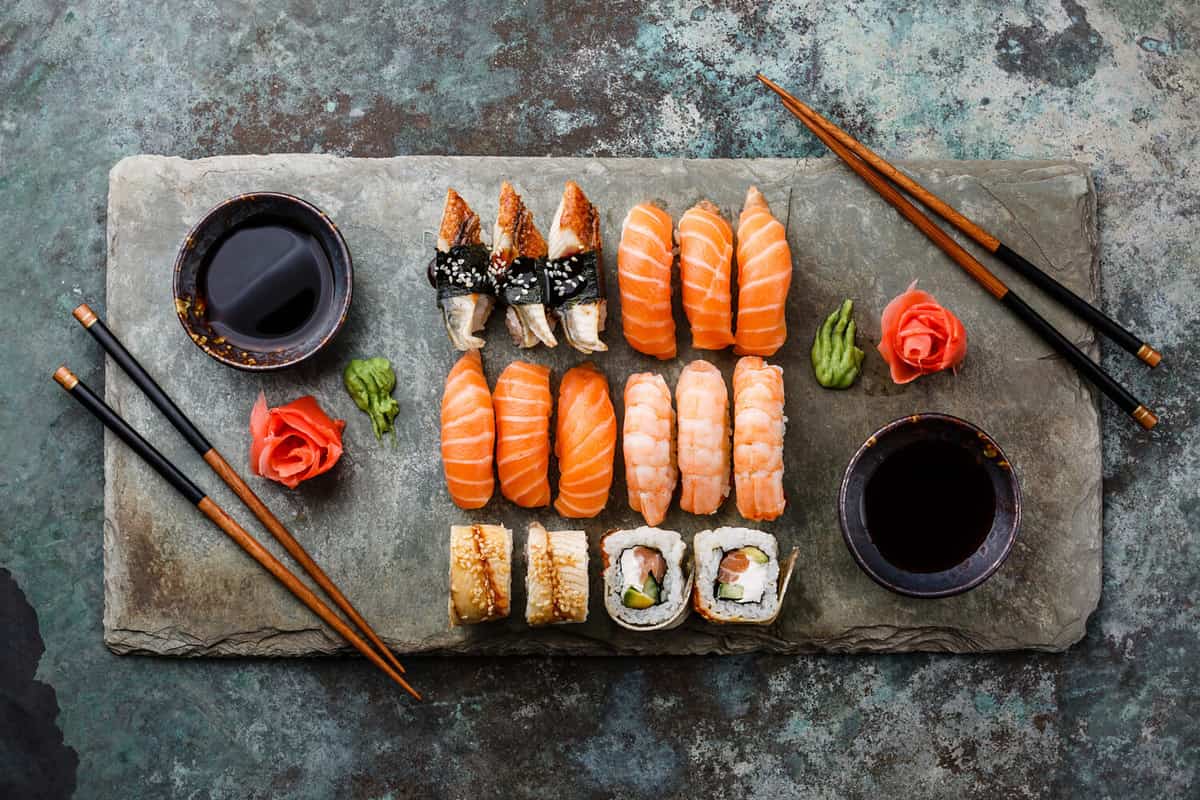
©Natalia Lisovskaya/Shutterstock.com
Maki vs. Sushi: What are the Differences?
Because maki is a form of sushi, it can be confusing to fully understand the differences. So, to better equip you in determining what to order the next time you go to a sushi bar, here are 3 main differences between these two Japanese cuisines.
Origin
Maki has a later origin date than sushi. According to Top Sushi, maki was believed to have been created and introduced in the 1800s by a chef named Hanaya Yohei. The purpose of the roll was to make it easier to eat and carry around. Easy-Sushi.com also states that the California roll first made its appearance in Los Angeles in the 1970s and has continued to grow in popularity here in the U.S.
As for Sushi, it is believed to have originated in Southeast Japan somewhere in the night century according to PBS. Its true beginnings aren't very clear, however, because there are a few different stories as to how this cuisine came to be and grew in popularity. Most stories include how this food was created by accident after it was realized that rice could help preserve fish.
Shape
As mentioned, maki comes as a bite-sized cylindrical roll. It's one of the most popular sushi rolls and has a distinct appearance. Sushi, however, comes in many different shapes and sizes. It can be served in a bowl, as a roll, in a tofu dish, or even simply as meat placed on top of rice.
Ingredients
Maki typically includes fish and vegetables but the ingredients are always rolled in nori seaweed. This seaweed can be used on the outside of the roll to hold the rice, fish, and vegetables, or it can be used on the inside to hold fish and vegetables while the rice makes up the outer layer.
In order for a meal to be considered sushi, it must contain vinegared rice. Outside of this main ingredient, sushi can have any combination of raw or cooked fish, shellfish, tofu, and vegetables. Popular fish and shellfish for sushi include salmon, tuna, yellowtail, eel, shrimp, octopus, crab, and scallops.
Maki vs. Sushi: Nutritional Value
Because sushi can come in so many different forms and variations, its exact nutritional value can be hard to quantify. Below is an example, but keep in mind that these numbers may change depending on what type of sushi is being consumed and how it's prepared.
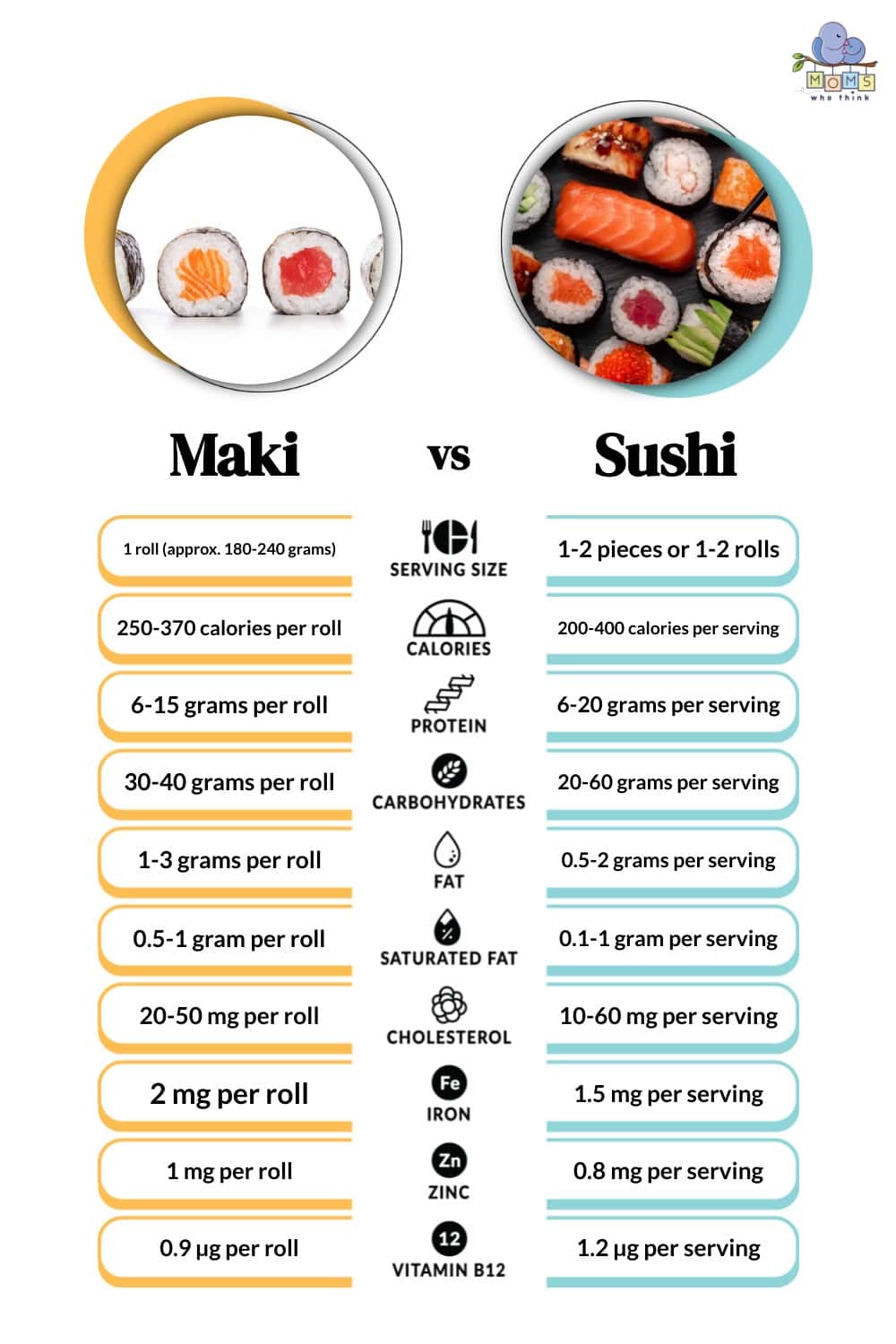
Maki vs. Other Types of Sushi
We've briefly discussed varying types of sushi, but let's take a little closer look at how maki compares to each one. Remember, maki will always consist of rolled nori seaweed.
Maki vs. Inari
Inari, also known as inarizushi, is different from maki in that it isn't rolled in seaweed and often doesn't contain fish. Its appearance is similar to a dish or bowl. The bowl is made from fried tofu and then stuffed with rice and topped with various vegetables and herbs. Inari usually has a sweeter taste.
Maki vs. Nigiri
Nigiri is a common form of sushi that's very popular. It also doesn't contain seaweed and is never rolled. Nigiri is simply a ball of rice that's been flattened and then topped with various forms of cooked or raw meat, seafood, and vegetables.
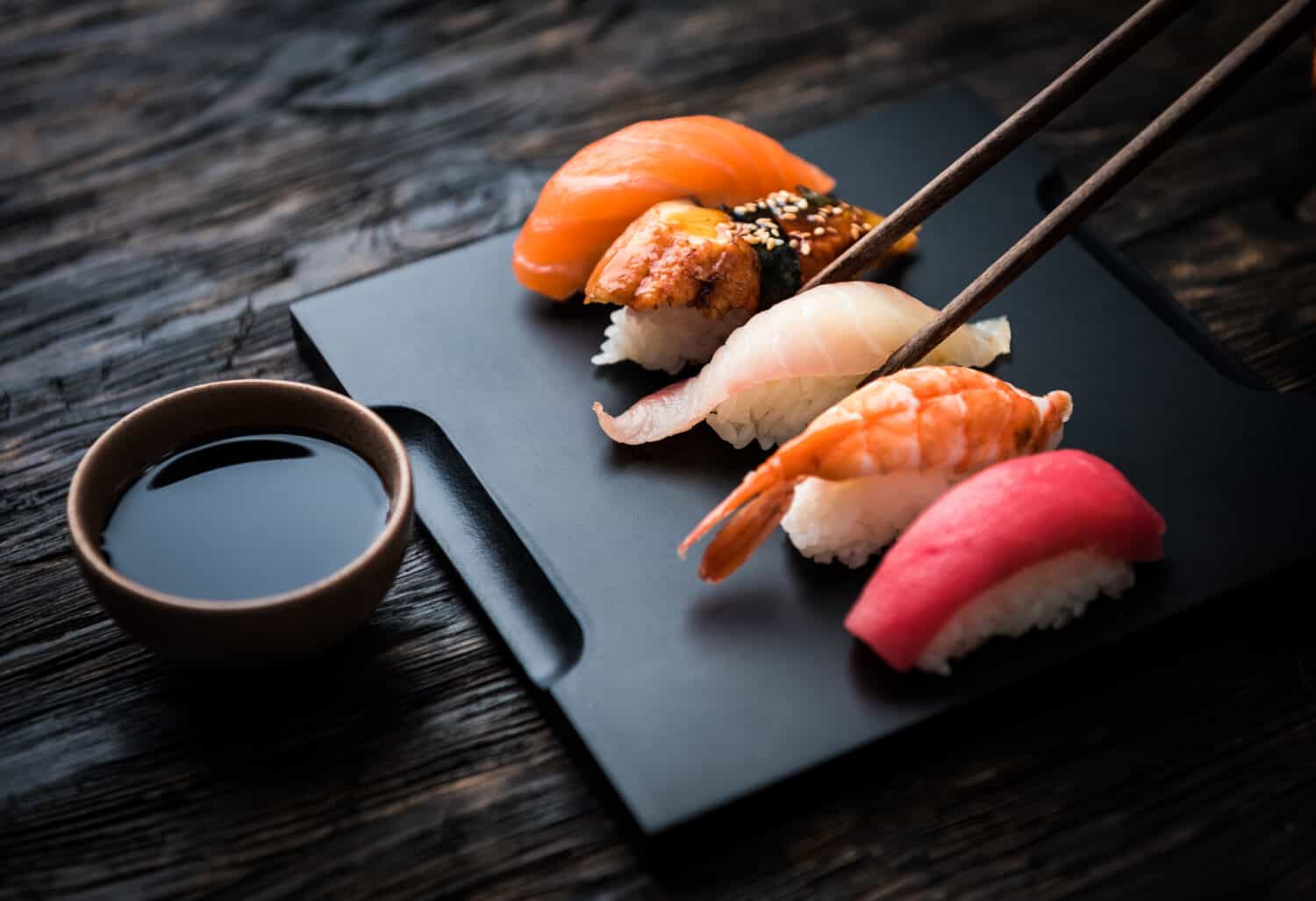
©In Green/Shutterstock.com
Maki vs. Chirashi
Chirashi, or chirashizushi, is a form of sushi in a physical bowl. According to FoodInJapan.org, the word Chirashi means “to scatter.” This Japanese sushi doesn't resemble a roll. It's simply ingredients like vegetables, fish, egg, and spices tossed inside a bowl and topped with garnishes.
Final Thoughts
Maki and sushi may seem identical but they differ in how they're prepared and the ingredients included. Maki is a type of sushi that's prepared in rolled seaweed, while sushi is a broader term that includes different variations of seafood, meat, vegetables, and rice. Hopefully, this guide can help you make a delicious choice the next time you review a sushi menu!
The image featured at the top of this post is ©Ground Picture/Shutterstock.com.
